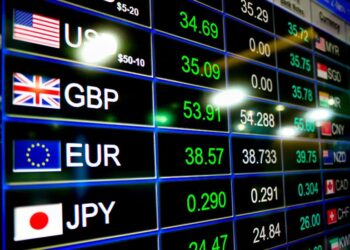Despite investor concerns about the return of volatility to markets, and of bond market inflation risk, in my view the recent growth in bond yields and attendant resurgent volatility in financial asset prices is, in fact, a return to the “old normal”.
It has been triggered not by the “pricing in” of inflation, or vulnerability in the equity market itself, but rather the winding back of the extraordinary support that policymakers generally, and central banks in particular, have provided for financial assets during the last decade.
Such winding back is, of course, entirely appropriate – and arguably overdue – in an environment where there is synchronised global growth.
What advisers and their clients need to keep in mind is that higher bond yields don’t automatically trigger a drop in equity markets.
In my view, we are likely to see a move in the US 10-year bond yield to something approaching four per cent in 2018.
However, such a move in bond yields – while certainly a headwind for equity markets – need not prevent equity markets from eking out modest returns in the same period, even if it does occur in an environment of higher volatility.
The growth outlook itself – signalled by various indicators of growth in activity such as GDP, employment and industry surveys – remains the most important focus for equities, rather than the movement in bond yields.
Overall, the picture that the data is currently painting seems pretty benign.
However, I’ve always liked to examine the risks around any seemly positive scenario, and ask “what could go wrong?”
The answer, unfortunately, is: “Plenty”.
In my view, there are three key risks (in order of significance):
-
US budget deficit
The US budget deficit is at unprecedently high levels for a peacetime economy, particularly one that is at full, or near full, employment.
Indeed, there is a large scale fiscal policy change underway in the US which seems to be out of character for the phase of the economic cycle.
President Trump’s corporate tax package will cost in the order of $US1.5 trillion over the next decade while the recent budget deal agreed by Congress will add some $US0.3 trillion to expenditures over the next two years.
The result will be the first trillion-dollar deficit in the US’s history.
This is not to deny the substantially positive supply-side effects of the corporate tax measures.
However, combined with spending increases, these measures imply a fiscal deficit of well over five per cent of GDP by 2019. That is almost unprecedented for a peace-time US economy at close to full employment.
There is simply no need to be applying such a stimulus to the economy at this stage of the cycle.
Doing so means not only will the US Treasury need to sell more bonds (increasing supply) but will be doing so at a time when the biggest buyer of recent years (the Fed) is reducing its balance sheet (i.e. reducing its bond purchases).
Clearly in such an environment, the risk might well be that inflation breaks significantly higher than currently expected and the Fed finds itself “behind the curve”.
In this scenario, it will need to enter into faster rate hikes, of greater magnitude, than currently priced, meaning 10-year bond yields break significantly higher than four per cent and lead to a tipping point for equities.
-
Global Trade Wars
An escalating global “trade war” ignited by retaliatory measures from China and the EU to the recent announcement by US President Trump of tariffs on steel and aluminium is a significant risk.
By themselves, the measures announced by Trump will not have any discernible impact on global growth.
The fear is that they incite retaliatory measures from the major trading blocs, such as China and the EU, leading to a race to the bottom in terms of protectionist measures, and an attendant slowing of global trade and economic growth.
For instance, the protectionist measures implemented by the US in 1930, and the retaliatory responses from other countries, is, in some quarters, cited as one of the primary reasons for the severity and durability of the Great Depression.
Unfortunately, given the mediocrity currently attaching to the global political class, it is by no means certain that we won’t see the emergence of an internecine trade war which upsets the positive global growth momentum that has characterised the start of the year.
The growing influence of protectionists within the US administration has increased the risk that the President’s more egregious protectionist leanings are not so restrained in the future.
An increase in global protectionist tendencies is not only unfavourable for global growth but implies higher prices and less economic flexibility leading to (for a time at least) more inflation pressure.
This may well imply higher interest rates for a given economic growth rate.
This combination is not generally conducive to financial asset returns.
In such an environment, higher bond yields may well lead also to an earlier tipping point for equity market performance and challenge the view that US equities can withstand US 10-year bond yields approaching four per cent.
-
Geo-Political Risk
There are a number of candidates for geo-political risk:
Tensions on the Korean Peninsula (although these seem to have abated somewhat following the “charm offensive” by the North Koreans at the recent Pyeongchang Winter Olympics and the surprise possibility of a summit meeting between Trump and North Korean Leader Kim Jong-Un).
The China / US relationship. Again, the issue of tariffs aside, the “heat” seems to have gone out of the military / strategic dimensions of US / China interactions.
As Paul Keating commented in early March, Trump shied away from a more traditional US policy of seeking strategic dominance, and instead showed himself to be pragmatic about China’s rise. And with North Korean tensions apparently abating that might well continue.
However, the tariff debate is a prickly one and a reminder that there may be ongoing areas of tension with China even if traditional sources of tension are diminishing.
The Middle East is a perpetual source of tension. Unfortunately, there appears to have been an escalation of tensions between Israel and Iran (and its proxies) in recent times.
An assertive Russia complicates any geo-political considerations.
It includes the alleged Russian interference in the 2016 US Presidential election (as well as other elections in the West); the Russian involvement in the assassination of a former Russian double agent in the UK; and continuing tensions with neighbours from Ukraine to the Baltic States.
A poorly executed (‘hard’) Brexit is an issue both for the UK and European economies.
Anti-EU inspired populism is also bubbling away in the background. The Italian elections were a timely reminder that this is going to be an ongoing issue as was the protracted process in Germany around the formation of a government.
Elections in the important Latin emerging economies of Brazil and Mexico later this year also bear watching.
Investment Implications
As mentioned, the central thesis is that the growth outlook remains the key focus for equities rather than the movement in bond yields.
My expectation is that bond yields move toward four per cent but that doesn’t prevent equities from achieving modest mid-single digit type returns over the year, albeit in an environment of greater volatility (or reduced reward for risk).
On the surface this implies a preference for equities over bonds but given what I regard as the key risks on the horizon there is a requirement for some circumspection in the implementation of that view.
Perhaps one implication of this is to be cautious of too much exposure to both bond and equity “beta”.
Instead, investors and their advisers could look at introducing absolute return strategies into portfolios.
This can include a contemplation of exposure to hedge funds (hopefully those uncorrelated with the fluctuations in risk sentiment) should risk appetite extend to that sector.
More importantly, however, for bond investors it underscores the importance of an allocation to so-called unconstrained bond portfolios, more as a complement to traditional bond portfolios benchmarked to a conventional index – such as the Bloomberg Barclays Global Aggregate or the Bloomberg AusBond indices – than a replacement.
Unconstrained portfolios typically have less duration exposure than conventional bond portfolios benchmarked to an index.
They typically will also seek more diversified sources of return such as exposures to other fixed income sectors, including inflation-linked bonds, corporates, high yield, emerging markets, FX, and asset backed securities.
The lower duration exposure tends to benefit performance in a rising interest rate environment, while the multiplicity of sectoral exposures diversifies risk and can mitigate total portfolio risk.
At the same time, such portfolios retain the conservative return profile associated with bonds.
As we anticipate a return to the “old normal”, investors could benefit from reviewing the strategies that have served them well for the last decade, and ensuring they still offer the right return for risk for their circumstances.
Steve Miller is an adviser to Grant Samuel Funds Management.





